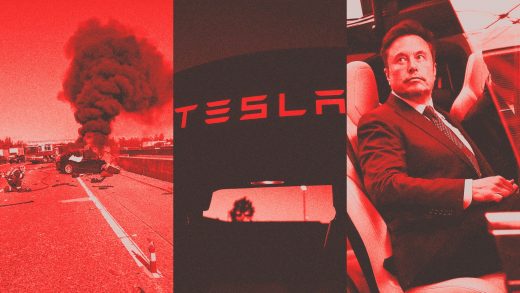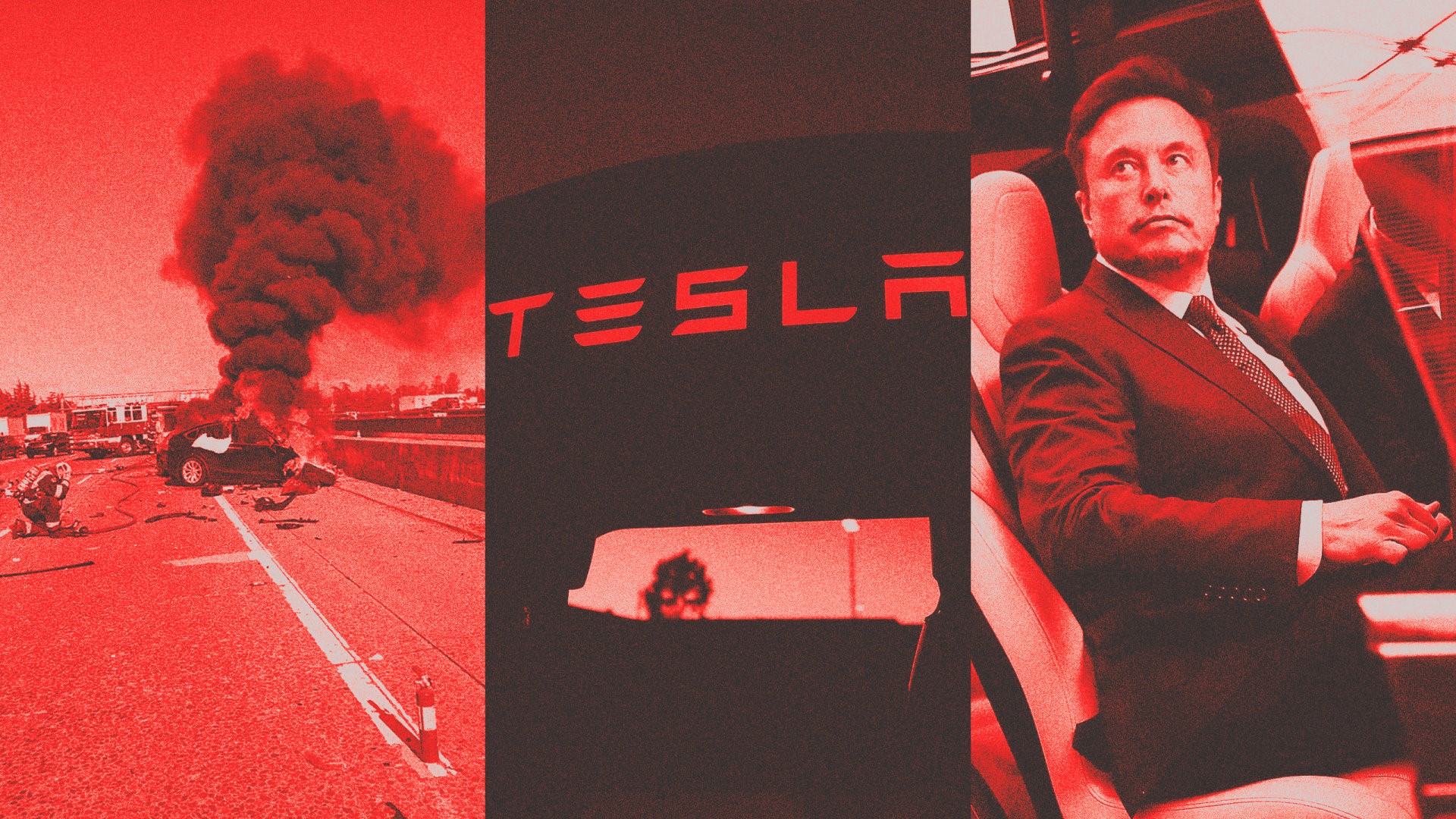Tesla will defend Autopilot in court again next week. New evidence may be a problem
Tesla will defend Autopilot in court again next week. New evidence may be a problem
Musk has publicly and long resisted calls for more advanced driver-monitoring systems, reasoning that his cars would soon be fully autonomous and safer than human-piloted vehicles.
BY Reuters
Six weeks before the first fatal U.S. accident involving Tesla’s Autopilot in 2016, the automaker’s president Jon McNeill tried it out in a Model X and emailed feedback to automated-driving chief Sterling Anderson, cc’ing Elon Musk.
The system performed perfectly, McNeill wrote, with the smoothness of a human driver.
“I got so comfortable under Autopilot, that I ended up blowing by exits because I was immersed in emails or calls (I know, I know, not a recommended use),” he wrote in the email dated March 25 that year.
Now McNeill’s email, which has not been previously reported, is being used in a new line of legal attack against Tesla over Autopilot.
Plaintiffs’ lawyers in a California wrongful-death lawsuit cited the message in a deposition as they asked a Tesla witness whether the company knew drivers would not watch the road when using its driver-assistance system, according to previously unreported transcripts reviewed by Reuters.
The Autopilot system can steer, accelerate and brake by itself on the open road but can’t fully replace a human driver, especially in city driving. Tesla materials explaining the system warn that it doesn’t make the car autonomous and requires a “fully attentive driver” who can “take over at any moment.”
The case, set for trial in San Jose the week of March 18, involves a fatal March 2018 crash and follows two previous California trials over Autopilot that Tesla won by arguing the drivers involved had not heeded its instructions to maintain attention while using the system.
This time, lawyers in the San Jose case have testimony from Tesla witnesses indicating that, before the accident, the automaker never studied how quickly and effectively drivers could take control if Autopilot accidentally steers toward an obstacle, the deposition transcripts show.
One witness testified that Tesla waited until 2021 to add a system monitoring drivers’ attentiveness with cameras—about three years after first considering it. The technology is designed to track a driver’s movements and alert them if they fail to focus on the road ahead.
The case involves a highway accident near San Francisco that killed Apple engineer Walter Huang. Tesla contends Huang misused the system because he was playing a video game just before the accident.
Lawyers for Huang’s family are raising questions about whether Tesla understood that drivers—like McNeill, its own president—likely wouldn’t or couldn’t use the system as directed, and what steps the automaker took to protect them.
Experts in autonomous-vehicle law say the case could pose the stiffest test to date of Tesla’s insistence that Autopilot is safe—if drivers do their part.
Matthew Wansley, a Cardozo law school associate professor with experience in the automated-vehicle industry, said Tesla’s knowledge of likely driver behavior could prove legally pivotal.
“If it was reasonably foreseeable to Tesla that someone would misuse the system, Tesla had an obligation to design the system in a way that prevented foreseeable misuse,” he said.
Richard Cupp, a Pepperdine law school professor, said Tesla might be able to undermine the plaintiffs’ strategy by arguing that Huang misused Autopilot intentionally.
But if successful, the plaintiffs’ attorneys could provide a blueprint for others suing over Autopilot. Tesla faces at least a dozen such suits now, eight of which involve fatalities, putting the automaker at risk of large monetary judgments.
Musk, Tesla, and its attorneys did not answer detailed questions from Reuters for this story.
McNeill declined to comment. Anderson did not respond to requests. Both have left Tesla. McNeill is a board member at General Motors and its self-driving subsidiary, Cruise. Anderson cofounded Aurora, a self-driving technology company.
Reuters could not determine whether Anderson or Musk read McNeill’s email.
Nearly 1,000 crashes
The crash that killed Huang is among hundreds of U.S. accidents where Autopilot was a suspected factor in reports to auto safety regulators.
The U.S. National Highway Traffic Safety Administration (NHTSA) has examined at least 956 crashes in which Autopilot was initially reported to have been in use. The agency separately launched more than 40 investigations into accidents involving Tesla automated-driving systems that resulted in 23 deaths.
Amid the NHTSA scrutiny, Tesla recalled more than 2 million vehicles with Autopilot in December to add more driver alerts. The fix was implemented through a remote software update.
Huang’s family alleges Autopilot steered his 2017 Model X into a highway barrier.
Tesla blames Huang, saying he failed to stay alert and take over driving. “There is no dispute that, had he been paying attention to the road, he would have had the opportunity to avoid this crash,” Tesla said in a court filing.
A Santa Clara Superior Court judge has not yet decided what evidence jurors will hear.
Tesla also faces a federal criminal probe, first reported by Reuters in 2022, into company claims that its cars can drive themselves. It disclosed in October it had received subpoenas related to driver-assistance systems.
Despite marketing features called Autopilot and Full Self-Driving, Tesla has yet to achieve Musk’s oft-stated ambition of producing autonomous vehicles that require no human intervention.
Tesla says Autopilot can match speed to surrounding traffic and navigate within a highway lane. The step-up “enhanced” Autopilot, which costs $6,000, adds automated lane-changes, highway ramp navigation, and self-parking features. The $12,000 Full Self-Driving option adds automated features for city streets, such as stop-light recognition.
“Ready to take control”
In light of the McNeill email, the plaintiffs’ lawyers in the Huang case are questioning Tesla’s contention that drivers can make split-second transitions back to driving if Autopilot makes a mistake.
The email shows how drivers can become complacent while using the system and ignore the road, said Bryant Walker Smith, a University of South Carolina professor with expertise in autonomous-vehicle law. The former Tesla president’s message, he said, “corroborates that Tesla recognizes that irresponsible driving behavior and inattentive driving is even more tempting in its vehicles.”
Huang family attorney Andrew McDevitt read portions of the email out loud during a deposition, according to a transcript. Reuters was unable to obtain the full text of McNeill’s note.
Plaintiffs’ attorneys also cited public comments by Musk while probing what Tesla knew about driver behavior. After a 2016 fatal crash, Musk told a news conference that drivers struggle more with attentiveness after they have used the system extensively.
“Autopilot accidents are far more likely for expert users,” he said. “It is not the neophytes.”
A 2017 Tesla safety analysis, a company document that was introduced into evidence in a previous case, made clear that the system relies on quick driver reactions. Autopilot might make an “unexpected steering input” at high speed, potentially causing the car to make a dangerous move, according to the document, which was cited by plaintiffs in one of the trials Tesla won. Such an error requires that the driver “is ready to take over control and can quickly apply the brake.”
In depositions, a Tesla employee and an expert witness the company hired were unable to identify any research the automaker conducted before the 2018 accident into drivers’ ability to take over when Autopilot fails.
“I’m not aware of any research specifically,” said the employee, who was designated by Tesla as the person most qualified to testify about Autopilot.
The automaker redacted the employee’s name from depositions, arguing that it was legally protected information.
McDevitt asked the Tesla expert witness, Christopher Monk, if he could name any specialists in human interaction with automated systems whom Tesla consulted while designing Autopilot.
“I cannot,” said Monk, who studies driver distraction and previously worked for the NHTSA, the depositions show.
Monk did not respond to requests for comment. Reuters was unable to independently determine whether Tesla has since March 2018 researched how fast drivers can take back control, or if it has studied the effectiveness of the camera-monitoring systems it activated in 2021.
Lulled into distraction
The National Transportation Safety Board (NTSB), which investigated five Autopilot-related crashes, has since 2017 repeatedly recommended that Tesla improve the driver-monitoring systems in its vehicles, without spelling out exactly how.
The agency, which conducts safety investigations and research but cannot order recalls, concluded in its report on the Huang accident: “Contributing to the crash was the Tesla vehicle’s ineffective monitoring of driver engagement, which facilitated the driver’s complacency and inattentiveness.”
In his 2016 comments, Musk said drivers would ignore as many as 10 warnings an hour about keeping their hands on the wheel.
The Tesla employee testified that the company considered using cameras to monitor drivers’ attentiveness before Huang’s accident, but didn’t introduce such a system until May 2021.
Musk, in public comments, has long resisted calls for more advanced driver-monitoring systems, reasoning that his cars would soon be fully autonomous and safer than human-piloted vehicles.
“The system is improving so much, so fast, that this is going to be a moot point very soon,” he said in 2019 on a podcast with artificial-intelligence researcher Lex Fridman. “I’d be shocked if it’s not by next year, at the latest . . . that having a human intervene will decrease safety.”
Tesla now concedes its cars need better safeguards. When it recalled vehicles with Autopilot in December, it explained that its driver-monitoring systems may not be sufficient and that the alerts it added during the recall would help drivers “adhere to their continuous driving responsibility.”
The recall, however, didn’t fully solve the problem, said Kelly Funkhouser, associate director of vehicle technology at Consumer Reports, one of the leading U.S. product-testing companies. Its road tests of two Tesla vehicles after the automaker’s fix found the system failed in myriad ways to address the safety concerns that sparked the recall.
“Autopilot usually does a good job,” Funkhouser said. “It rarely fails, but it does fail.”
—Dan Levine and Hyunjoo Jin, Reuters
Additional reporting by David Shepardson in Washington, D.C.
(35)



